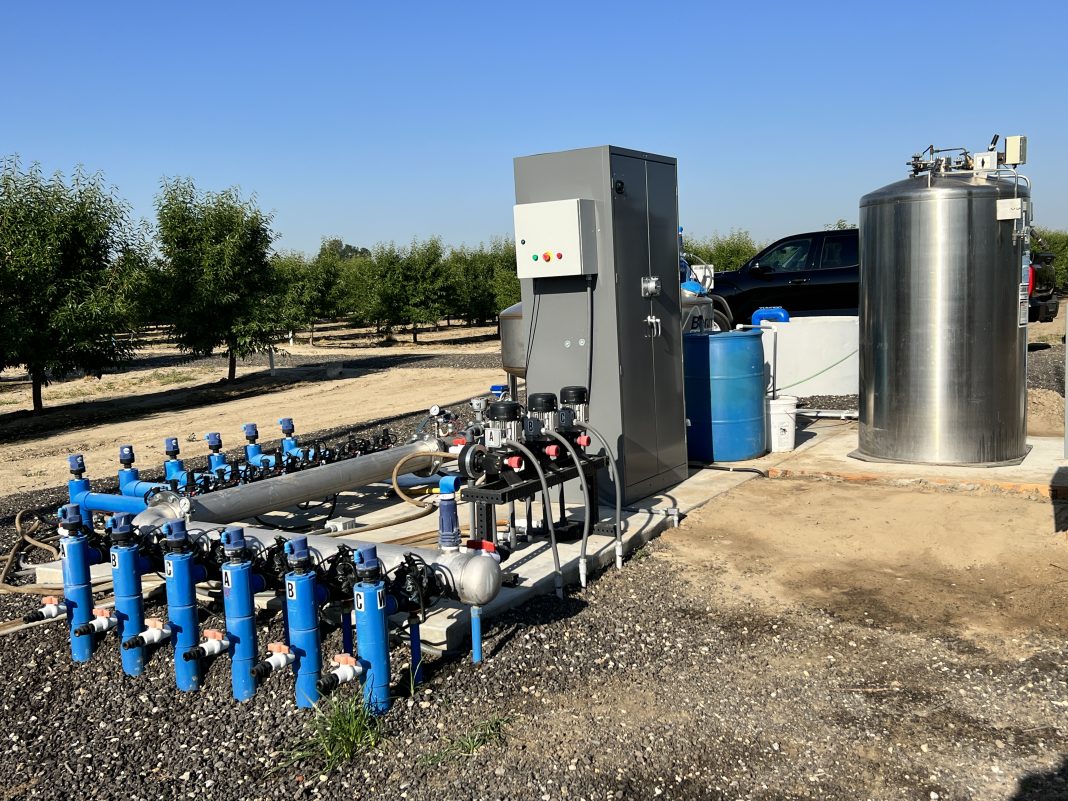Rain picks up carbon dioxide (CO2) as it falls. The carbon dioxide that dissolves into the rainwater forms carbonic acid, gently reducing pH. Moraga replicated the concept in his ECO2MIX system, dissolving CO2 from tanks into irrigation water.
Mixing is a must
The challenge in working with CO2, Moraga notes, is that free bubbles of carbon dioxide in irrigation water can actually increase levels of bicarbonate (HCO3) in soil, leading to the opposite effect—soil pH can increase, and salts can build up as bicarbonate molecules strip calcium out of the soil.
The bottom line is that thoroughly injecting and mixing CO2 into a solution is vital to making a carbonic acid pH system work. Based on his decades of experience with Mazzei injectors in irrigation systems, Moraga quickly integrated injectors into his ECO2MIX system. The system diverts a portion of the irrigation water through Mazzei venturi injectors. The injectors use the flow of water to create a vacuum that draws in a precise amount of CO2, naturally maintaining the proper proportions of gas to liquid. Internal mixing vanes in the injectors’ cones create microbubbles to maximize the surface area available for gas transfer and create turbulence that increases transfer efficiencies to more than 90 percent. The result is high-efficiency mixing and the reliable formation of carbonic acid—without free CO2 bubbles and moving parts. In addition, injectors require a relatively low-pressure differential to operate, minimizing pumping energy and cost.
The acidified side stream is reintroduced to the main flow through carefully engineered and precisely placed nozzles to blend the carbonic acid into the irrigation supply. In a matter of a few feet, the blending is thorough and complete. ECO2MIX electronically monitors pH and CO2 flow throughout the system to ensure that the proper level of treatment is being delivered at all times.



